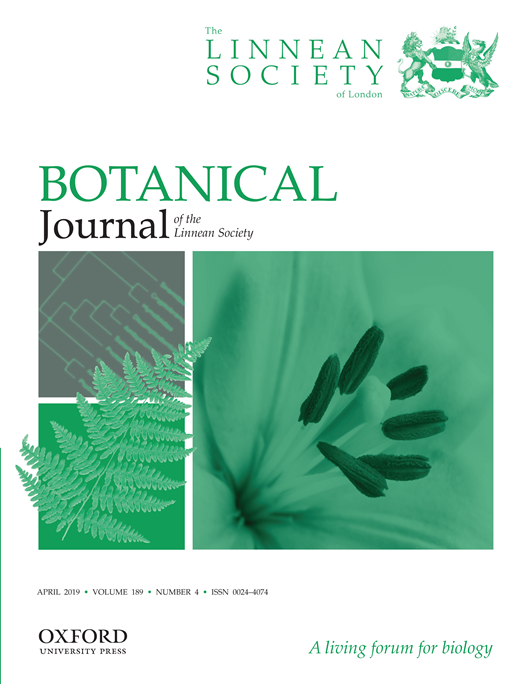Ver ítem
- xmlui.general.dspace_homeCentros e Institutos de InvestigaciónCIRN. Centro de Investigaciones de Recursos NaturalesInstituto de Recursos BiológicosArtículos científicosxmlui.ArtifactBrowser.ItemViewer.trail
- Inicio
- Centros e Institutos de Investigación
- CIRN. Centro de Investigaciones de Recursos Naturales
- Instituto de Recursos Biológicos
- Artículos científicos
- Ver ítem
Stability and fragmentation versus demographic expansion: different phylogeographic patterns in closely related sympatric legumes (Senna) from arid and semi-arid zones of mid-latitude South America
Resumen
This is the first comparative research in which phylogeographical patterns and present and palaeoclimatic distribution were investigated in desert plants that inhabit the Argentinian Monte and Chaco biogeographic provinces. We investigated two closely related and partially sympatric species of legume shrubs, Senna aphylla and Senna pachyrrhiza, to contribute to understand the evolutionary history of arid plants and the impact of Quaternary climatic
[ver mas...]
This is the first comparative research in which phylogeographical patterns and present and palaeoclimatic distribution were investigated in desert plants that inhabit the Argentinian Monte and Chaco biogeographic provinces. We investigated two closely related and partially sympatric species of legume shrubs, Senna aphylla and Senna pachyrrhiza, to contribute to understand the evolutionary history of arid plants and the impact of Quaternary climatic oscillations in these regions. We carried out phylogeographic analyses using plastid DNA accD-psa1 and rpL32-trnL sequences and reconstructed palaeodistribution by ecological niche modelling (ENM). In S. aphylla, that inhabits northern areas of the Monte, the haplotype network, demographic and spatial analyses and ENM indicated that the populations have remained demographic and spatially stable and would have undergone fragmentation in intermountain valleys and bolsons. In S. pachyrrhiza, distributed mainly along the Monte and southwestern Dry Chaco, the haplotype network presented a ‘star-like’ topology and demographic analyses and ENM supported a recent demographic expansion but no range expansion. The species diversified c. 2.5 Mya, survived Quaternary glaciations and responded differently to climatic changes, complex topography and environmental heterogeneity. The complex geological and climatic history of arid lands in mid-latitude South America provides different scenarios that promoted a mosaic of phylogeographical patterns.
[Cerrar]

Autor
Robbiati, Federico Omar;
Nores, María Jimena;
Anton, Ana María Ramona;
Fortunato, Renee Hersilia;
Fuente
Botanical Journal of the Linnean Society ( 01 march, 2021)
Fecha
2021-03-01
Editorial
Oxford University Press
ISSN
0024-4074
Formato
pdf
Tipo de documento
artículo
Palabras Claves
Derechos de acceso
Restringido
 Excepto donde se diga explicitamente, este item se publica bajo la siguiente descripción: Creative Commons Attribution-NonCommercial-ShareAlike 2.5 Unported (CC BY-NC-SA 2.5)
Excepto donde se diga explicitamente, este item se publica bajo la siguiente descripción: Creative Commons Attribution-NonCommercial-ShareAlike 2.5 Unported (CC BY-NC-SA 2.5)

